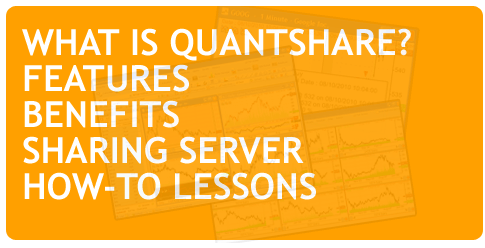What makes one strategy better than another? What metric should we use to compare two strategies? These are essential questions when it comes to deciding whether to invest money in a strategy or not. The annual return is an important metric in assessing trading strategies. Although this measure shows us how much money we can except to earn in the future when trading the corresponding strategy, it does not take account of its risk. The more risky a strategy is, the more uncertain the future returns of the strategy will be as the past returns. A popular and widely used metric to assess strategies is the Sharpe ratio. It was developed William Forsyth Sharpe in 1966 and it is a measure of a strategy performance. The Ratio is calculated using the strategy return, the risk free rate and the strategy volatility (the volatility is a measure of risk). The Sharpe ratio is the excess return (also called risk premium) of a trading strategy per unit of risk, and its formula is as follows: SharpeRatio = (Strategy's annual return - risk free return) / (Strategy's volatility) This formula should be annualized when the Sharpe Ratio is involved in comparing different strategies, because the strategies may have different sample duration. Unlike the return, which is annualized by multiplying it by a factor (the factor is the number of days in a trading year divided by the number of trading days); the Sharpe Ratio is annualized by multiplying it by the square root of the latter factor. To illustrate the calculation of the Sharpe ratio, consider a Strategy A1, which has a performance of 20% and a volatility of 25% for a period of 2 years. The mean US. T-bill during this period was 3.5% (T-Bill represents the risk-free rate in this example) SR = (20 - 3.5) / 25 = 0.66 The annualized Sharpe ratio is: SR * square_root(250 / 500) or SR * square_root(1 (year) / 2 (year)) = 0.66 * square_root(0.5) = 0.46 The higher the Sharpe Ratio, the better the strategy’s risk-adjusted performance. Look at the two equity curves below. Even though the first one has a better return, the second equity has a higher Sharpe Ratio, which means that the second strategy has a better return per unit of risk (risk-adjusted return). Return: 188% - Sharpe Ratio: 0.69 Return: 74% - Sharpe Ratio: 1.01 Some people will choose the first strategy because it simply has a better return. However, as we said earlier, this is the past return, the future return is unknown and a higher volatility will certainly make it more uncertain. Moreover, a strategy with a higher Sharpe Ratio will let you trade at a higher leverage, and thus will get a higher leveraged return.
|

|
|
|
|







